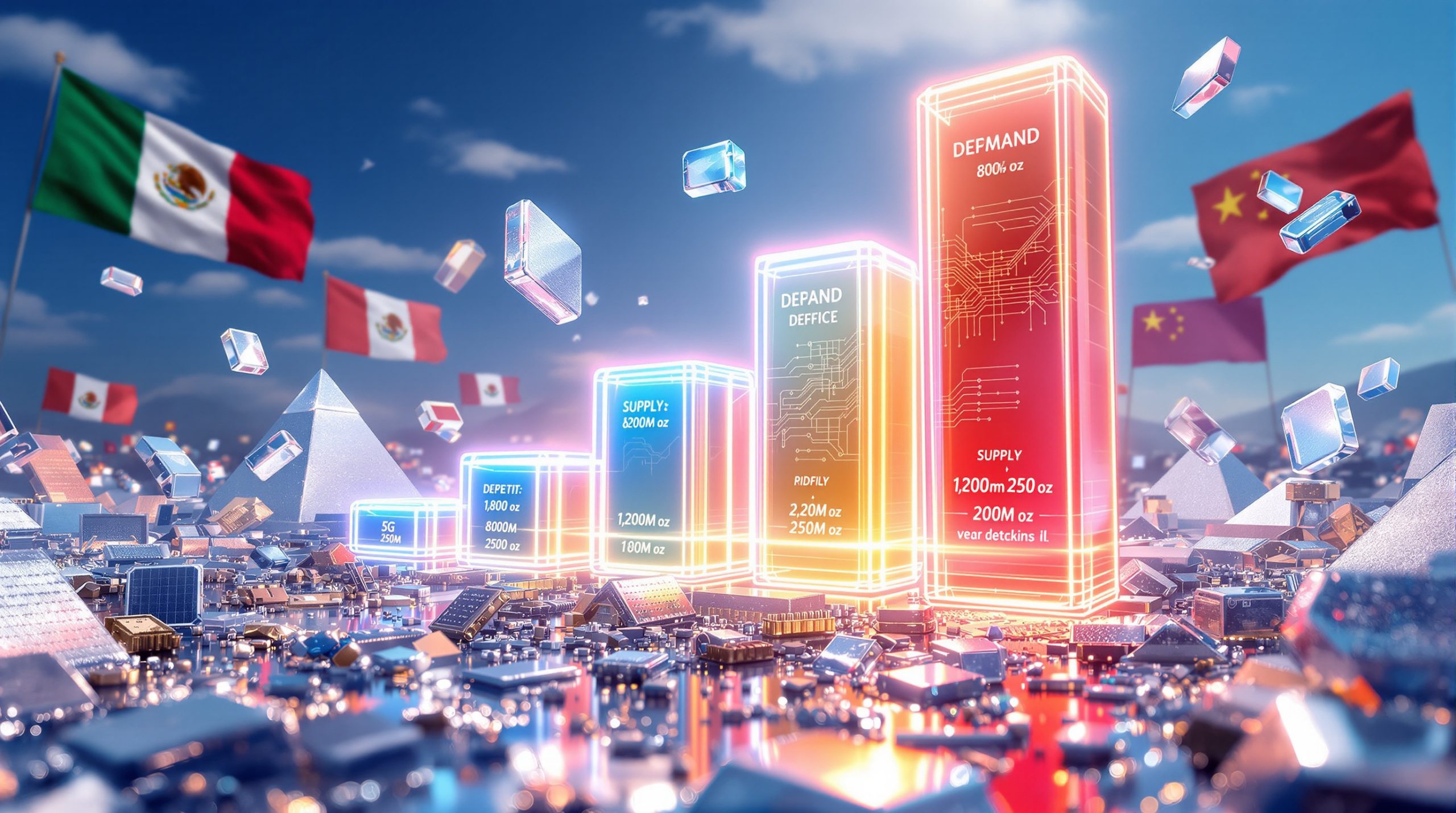The Current State of Global EV Battery Market Dominance
The electric vehicle battery landscape has transformed dramatically, with China's battery manufacturers in the global electric car market establishing unprecedented control over global supply chains. Market analysis reveals that Chinese companies now command approximately 60% of worldwide battery production capacity, fundamentally altering competitive dynamics across the automotive sector. This dominance is particularly evident in recent battery metals investment trends that reflect China's strategic positioning.
Market Share Distribution Among Leading Players
According to SNE Research's October 2025 analysis, global battery capacity installed in electric and hybrid vehicles reached 691.3 GWh during the first eight months of 2025, representing substantial 34.9% growth compared to the same period in 2024. Furthermore, this trajectory indicates the industry will likely surpass the crucial 1,000 GWh milestone by year-end.
| Manufacturer | Country | Market Share | Production Volume (GWh) | YoY Growth |
|---|---|---|---|---|
| CATL | China | 36.8% | 254.5 | +31.9% |
| BYD | China | 18.0% | 124.8 | +50.0% |
| LG Energy Solution | South Korea | 9.7% | 67.4 | +13.0% |
| CALB | China | 4.6% | – | – |
| SK On | South Korea | 4.2% | 29.2 | +20.0% |
| Panasonic | Japan | 3.7% | – | – |
Production Volume Milestones and Projections
The data demonstrates China's battery manufacturers commanding 59.4% combined market share among the top six global producers. CATL maintains its position as the undisputed market leader, while BYD has emerged as a formidable second-place competitor, achieving remarkable 50% year-over-year growth.
When compared to 2024's total production of 901 GWh, the current pace suggests significant acceleration in global battery deployment. This growth is driven primarily by expanding electric vehicle adoption and China's battery manufacturers increasing their production capabilities through advanced battery recycling breakthrough technologies.
What Competitive Advantages Drive Chinese Battery Manufacturers' Success?
China's battery manufacturers in the global electric car market have leveraged multiple strategic advantages to establish market leadership, fundamentally reshaping industry approaches to manufacturing, innovation, and cost optimisation.
Vertical Integration and Supply Chain Control
Chinese manufacturers have implemented comprehensive vertical integration strategies, controlling production processes from raw materials through finished battery assembly. This approach enables superior cost management and supply chain resilience compared to competitors relying on fragmented supplier networks.
BYD exemplifies this strategy through complete in-house production capabilities. According to SNE Research's analysis, the company demonstrates strong vertical integration of the value chain for batteries and vehicles. Consequently, this allows it to leverage significant price advantages while maintaining quality standards.
Technology Innovation and Development Speed
Chinese companies are pioneering advanced battery technologies, particularly in lithium iron phosphate chemistry applications. These developments offer enhanced safety profiles and cost-effectiveness compared to traditional formulations, supported by sophisticated battery-grade lithium refinery infrastructure.
Advanced Development Areas Include:
- Enhanced energy storage solutions
- Improved manufacturing efficiency processes
- Superior thermal management implementations
- Extended operational lifespan capabilities
Manufacturing Scale and Cost Leadership
The scale of Chinese battery production creates substantial competitive advantages that international rivals struggle to match. This manufacturing superiority stems from massive production facilities, economies of scale in component sourcing, and streamlined operational processes.
How Are South Korean and Japanese Manufacturers Responding to Chinese Competition?
Traditional battery industry leaders from South Korea and Japan are experiencing significant market share erosion as China's battery manufacturers expand their global presence.
South Korean Market Position Changes
South Korean manufacturers collectively held 16.8% market share during the first eight months of 2025, representing a decline of 3.8 percentage points compared to the same period in 2024. This trend reflects the challenges these companies face in competing with Chinese cost structures and production volumes.
Individual Company Performance Analysis:
- LG Energy Solution: Achieved 13% growth but remained below market average due to Tesla sales decline
- SK On: Recorded moderate 20% growth through partnerships with major automotive groups
- Samsung SDI: Experienced declining sales volumes with -9.1% year-over-year performance
Strategic Adaptations and Market Repositioning
South Korean and Japanese manufacturers are implementing various strategies to maintain competitiveness in the evolving market landscape, particularly given the EV mining transformation affecting supply chains.
Panasonic's Supply Chain Restructuring:
SNE Research notes that Panasonic is actively working on reducing dependency on Chinese materials, expanding procurement of local materials, and securing alternative material sources to increase stability in battery production. These efforts are expected to establish a significant foundation for recovery in battery usage and market share maintenance in the North American market.
This restructuring responds directly to recent tightening of US tariffs on Chinese batteries and raw materials under the current administration's trade policies.
Which Global Automakers Are Partnering with Chinese Battery Suppliers?
China's battery manufacturers have successfully established partnerships with leading international automotive brands, demonstrating their technological capabilities and reliability across diverse market segments.
CATL's International Customer Portfolio
CATL supplies batteries to a comprehensive range of global automakers, including both domestic Chinese brands and international manufacturers:
Chinese OEM Partners:
- Zeekr (performance electric vehicles)
- Aito (luxury electric models)
- Li Auto (hybrid electric systems)
- Xiaomi (electric vehicle venture)
International Brand Partnerships:
- Tesla (multiple model applications)
- BMW (various electric platforms)
- Mercedes-Benz (EV series vehicles)
- Volkswagen (ID series production)
BYD's Integrated Market Strategy
BYD's approach differs significantly from other suppliers, as the company primarily produces batteries for its own electric vehicle lineup while selectively engaging with external partners. This strategy has enabled remarkable expansion in European markets, with battery usage increasing 263% year-over-year to 8.6 GWh in the first half of 2025.
SNE Research analysis indicates that BYD consolidated its presence not only in the Chinese domestic market but also globally. In addition, the company demonstrated particular strength in European market penetration during 2025.
What Impact Do Trade Policies Have on Chinese Battery Market Expansion?
International trade policies and regulatory frameworks significantly influence how China's battery manufacturers in the global electric car market expand globally and compete with domestic producers in various markets.
Regional Market Access Challenges
North American Market Dynamics:
The recent tightening of US tariffs on Chinese batteries and raw materials has prompted significant supply chain restructuring among battery manufacturers. Companies are actively developing strategies to maintain competitiveness despite increased trade barriers.
European Market Considerations:
European markets present different regulatory challenges, though specific policy details require ongoing monitoring as trade relationships evolve. These developments are particularly relevant given the critical minerals transition affecting global supply chains.
Supply Chain Adaptation Strategies
China's battery manufacturers are implementing sophisticated approaches to navigate trade restrictions:
- Regional Manufacturing Development: Establishing production capabilities in target markets
- Partnership Formation: Collaborating with local companies to meet regulatory requirements
- Material Sourcing Diversification: Reducing dependency on single-source supply chains
- Technology Transfer Arrangements: Providing expertise to local manufacturing partners
How Are Chinese Battery Technologies Advancing Compared to Global Competitors?
China's battery manufacturers are not only competing on cost but increasingly leading in technological innovation across multiple performance dimensions.
Manufacturing Process Innovations
Chinese manufacturers have developed advanced production techniques that improve both quality and efficiency. These innovations encompass automated assembly processes, enhanced quality control systems, and modular design approaches that enable flexible production configurations.
The industry has witnessed significant improvements in production consistency and scalability. Consequently, Chinese manufacturers can meet growing global demand while maintaining competitive pricing structures.
Research and Development Investment
China's battery manufacturers are investing heavily in research and development initiatives, focusing on next-generation technologies that promise improved performance characteristics and reduced production costs.
Areas of particular focus include:
- Enhanced energy storage capabilities
- Improved charging speed implementations
- Extended operational lifespan development
- Advanced safety feature integration
What Does the Future Hold for Chinese Battery Manufacturers in Global Markets?
The trajectory of China's battery manufacturers suggests continued expansion and technological leadership, with several key trends shaping their future market position.
Production Capacity Expansion Outlook
Based on current growth trajectories, global battery production is projected to exceed the 1,000 GWh threshold in 2025. Furthermore, Chinese manufacturers are positioned to capture a significant portion of this expansion. The industry momentum indicates sustained demand growth across multiple geographic markets.
Market Penetration Strategies
China's battery manufacturers in the global electric car market are pursuing comprehensive global expansion through multiple channels:
- Direct OEM Partnerships: Expanding relationships with international automotive manufacturers
- Regional Market Development: Establishing presence in key geographic markets
- Technology Leadership: Advancing innovation to maintain competitive advantages
- Strategic Collaboration: Forming partnerships to navigate regulatory requirements
Investment and Innovation Priorities
Future development priorities for China's battery manufacturers encompass advanced technology commercialisation, enhanced energy density achievements, and integrated system designs. These developments support evolving electric vehicle architectures and emerging global EV market trends.
Frequently Asked Questions About Chinese Battery Manufacturers
Why Are Chinese Battery Manufacturers More Cost-Competitive?
China's battery manufacturers achieve cost advantages through vertical integration strategies, massive production scale, optimised supply chain management, and comprehensive manufacturing infrastructure. These factors combine to create pricing advantages that international competitors find challenging to match.
How Do Chinese Battery Technologies Compare to Western Alternatives?
Chinese battery technologies have evolved to match or exceed Western alternatives in most performance metrics. The industry has overcome earlier quality perceptions through significant technological advances and rigorous manufacturing standards.
What Are the Geopolitical Implications of Chinese Battery Dominance?
Chinese control over battery production creates strategic considerations for countries pursuing electrification goals. This has prompted various nations to develop domestic battery industries and implement policies to diversify supply chain dependencies.
Disclaimer: This analysis includes market projections and industry trends that involve inherent uncertainties. Future performance may vary based on technological developments, regulatory changes, and market conditions. Readers should consider multiple sources and professional advice when making investment or business decisions related to the battery industry.
Sources: Primary data sourced from SNE Research analysis published October 15, 2025. Additional industry insights compiled from verified market research and manufacturer reporting.
Ready to Capitalise on Battery Metal Investment Opportunities?
China's battery manufacturers' dominance creates significant ripple effects across global commodity markets, particularly for critical battery metals like lithium, nickel, and cobalt. Discovery Alert's proprietary Discovery IQ model delivers real-time alerts on significant battery metals discoveries on the ASX, instantly empowering subscribers to identify actionable investment opportunities ahead of the broader market. Begin your 30-day free trial today and secure your market-leading advantage in this rapidly evolving sector.




